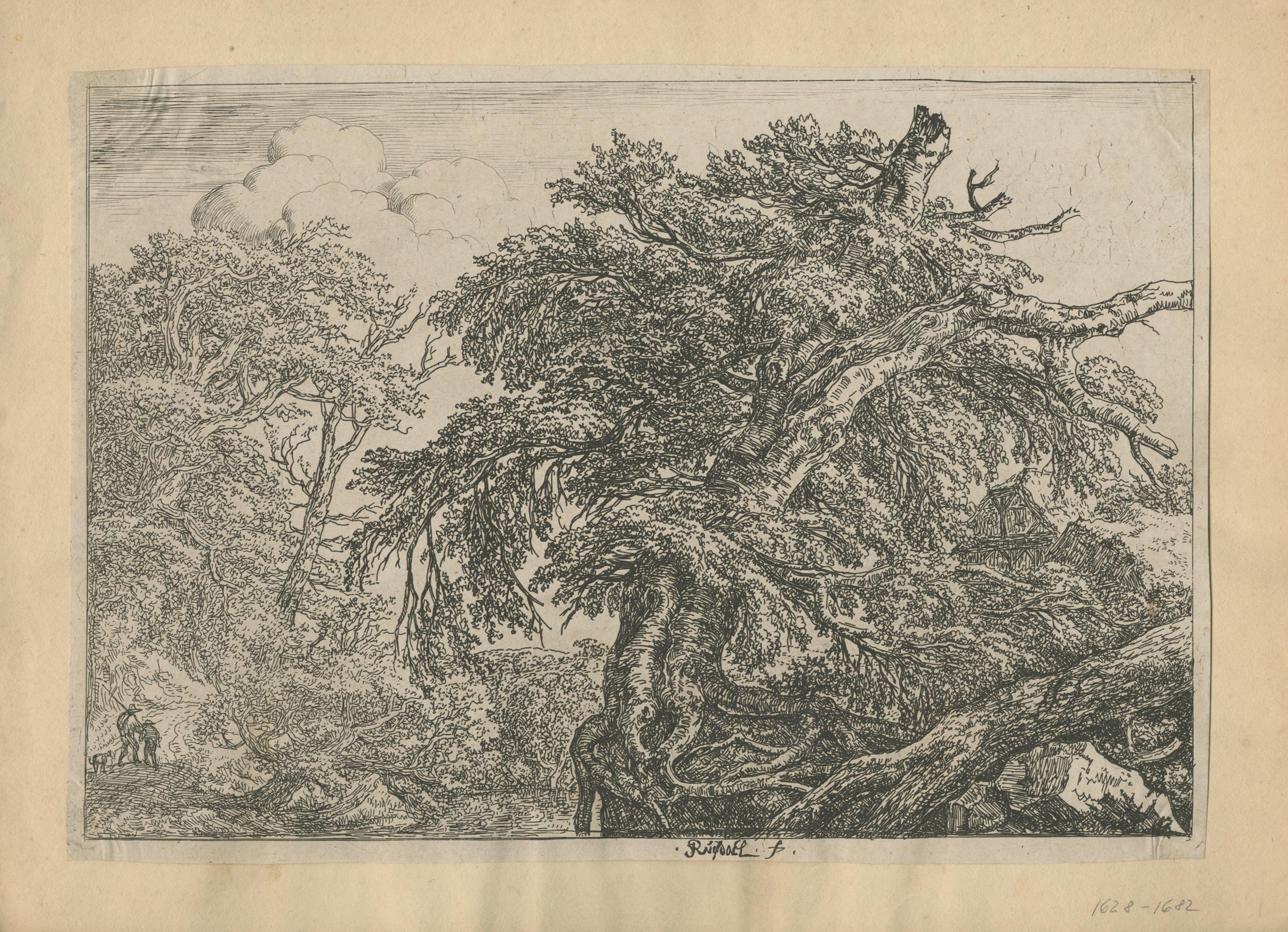Jacob van Ruisdael
Jacob van Ruisdael
Jacob van Ruisdael Etching “The Great Beech” - 1650
Stunning original 17th century etching by Dutch master painter Jacob van Ruisdael, The Great Beech (aka Two Farmers with Their Dog), signed in the plate, impression on Japon paper, tipped onto a support sheet. The image size is 7.25 inches x 10.5 inches. Small margins and in very good condition, with only slight adhesive rippling to the corners. Identical editions can be found in the permanent collections of The Metropolitan Museum of Art, the Philadelphia Museum of Art, the British Museum of Art, and the Rijksmuseum in Amsterdam.
Jacob van Ruisdael (1628-1682) is considered one of the great Dutch masters of landscape painting. Inspired by his surroundings and from the tales of travelers he met, he created paintings that evoke emotion and contemplation. Van Ruisdael also used his imagination to create dramatic scenes and some of the most astonishing landscape art works ever produced. Though van Ruisdael was most famous for his landscape paintings, he also produced a small but impressive collection of etchings.
Recognizing the growing appeal foreign landscapes had for art buyers, van Ruisdael set out for the rugged German border country around 1650 in search of inspiration. This etching, The Great Beech—one of only thirteen he completed—grew out of that journey. Brimming with character, the exaggerated tree clinging tenaciously to the bank shows itself to be a survivor, as well as a symbol of transience amid the relentless cycle of growth and decay. Like the pair of dwarfed farmers in the background, we are meant to contemplate life’s impermanence and the heroic power of untamed nature.
Rooted in the Classical style, van Ruisdael laid the foundation for the Romantic style that came about in the late 18th century. His romantic mood is evident in his depiction of nature as he creates beautiful and tumultuous interpretations of the weather. Van Ruisdael portrayed images, objects and structures amidst the vast horizons that created a sense of escapism in their dreamlike portrayal.

